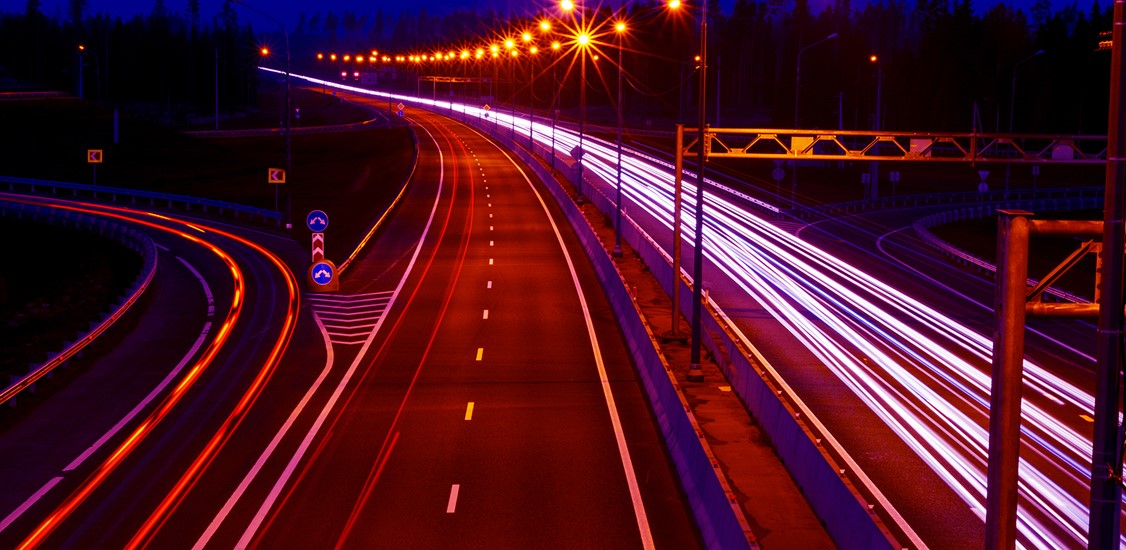As human beings, we have an amazing capacity for being surprised. Consider the global pandemic as proof: unexpected events continue to catch us off guard. The last 18 months have truly been a wake-up call, and our ability to deal with change will be measured against our ability to both adapt and thrive in such a world.
Still, we can’t afford to go through another such disruption without designing for it. In fact, rather than creating traffic models around busy hours and orchestrated services, we should focus on mastering the unexpected. So… how do we do that?
Build in agility
Back in 2017, Nokia Bell Labs forecast that IP traffic would more than double in the next five years. Little did we know how reality would strike. Indeed, our network analytic tools have shown that in the past 12 months, network traffic has grown 60 percent. Seven times the predicted pace!
Hundreds had predicted an event such as the pandemic, but it is fair to say that no one was prepared for the magnitude of its impact. Service Providers met the Herculean task of delivering network performance beyond design capabilities. Yet, for much of COVID-19, we have been in reactive mode.
Think about the variety of applications that became the norm when COVID-19 hit. Remote learning, working from home, e-medicine, video conferencing, online grocery shopping, increased reliance on the cloud, video streaming and gaming. They all seemed vaguely aspirational, even fictional, pre-pandemic.
We did not plan for these traffic models, and now, there's no going back. Our difficulty in handling significant pattern shifts shows a weakness in our network architectures, which are based on assumptions about stable statistical behavior. Especially with 5G, which is designed for a multitude of traffic types and use cases, we need agility and flexibility.
Build in sustainability
Enabling society and the world of work to continue functioning during the pandemic is one important role of networks. But digitalization plays a role in countering other important global challenges too.
Chief among these is climate change.
The world needs innovative new solutions if we want to meet the U.N. Paris Agreement target of limiting the rise in global temperatures to 1.5 degrees Celsius by 2050 by comparison with pre-industrial levels. Only look to the high incidence of forest fires – more than 8,000 in 2021 alone that spread over 2.5 million acres, or the melting ice caps and rising sea levels. These bring the urgency of global warming to a more personal rather than abstract level. We are surely not doing enough.
Many organizations, our service provider customers among them, are responding by making changes in their own operations. For example, the U.K. aims to reach net zero carbon emissions by 2050, and BT has correspondingly set itself the objective of achieving net zero by 2045.
In November 2021, Nokia reaffirmed its commitment to sustainability across its operations and products, calling for accelerated digitalization and green energy uptake. Nokia has set its sights on 100 percent renewable electricity in its own operations by 2025. We are improving energy efficiency by ensuring efficient power consumption despite increasing bandwidth capacities, by designing equipment for reuse, and by working with more environmentally friendly materials. We take back obsolete products, refurbish and resell equipment, and dispose of end-of-life products responsibly, avoiding up to 40 percent of the carbon dioxide emissions of the manufacturing process. And with our new IP silicon, FP5, we are reducing power consumption by 75 percent. That means we can increase system capacity 3X while maintaining the same power envelope as previous generations.
These are important commitments because the information and communications technology (ICT) industry is responsible for between five to nine percent of electricity consumption and two percent of global greenhouse gas emissions. That's the equivalent of the carbon footprint of all air traffic. At the same time, ICT can have a strong net positive effect on greenhouse gas emissions by helping other industries reduce their consumption of fossil fuels, as diverse as transportation, energy, agriculture, and manufacturing.
Build in security
Telecoms networks are in short becoming important across a range of urgent global challenges. But the more society and business rely on them, the more we see attacks being launched against them.
Distributed denial of service (DDoS) traffic is now the fastest growing category of traffic on the internet, outstripping video by a massive 40 percent. This is a serious problem for service providers already challenged with delivering consistently high service quality to satisfy industry 4.0, 5G and other critical applications. The disruptive impact of surging DDoS traffic cannot be understated.
At the same time, service providers are embracing third-party transport options, open architectures and globalization. These moves are made for sound technology and commercial reasons, but they can make IP networks and the data that flows through them more vulnerable to attack. Criminal acts carried out online have often been treated by the media and the public as somehow abstract or victimless. That's changing. These are most certainly not victimless crimes. In the first half of 2021 in the U.S. alone, breaches of technology security led variously to the interruption of the gas supply to most of the Eastern seaboard, to a major financial company being locked out of its own network for two weeks, and to a dangerous increase in the lye levels of a public water supply.
Service providers looking to secure new revenue from the digitalization of critical industries must be confident that the data carried over their networks is protected against theft and manipulation.
Embrace the future with Nokia IP solutions
For Nokia, the challenge is to deliver a foundation that gives our customers the support they need to help overcome the challenges we all face.
To do that, this foundation needs to provide the agility to deal with the unexpected, the efficiency and innovation needed to help address climate change, and the advanced network security capabilities that will help organizations move forward safe from network threats. Our organization's focus has always been on delivering quality solutions and expertise to solve the world's hardest IP networking challenges.
As a global leader in service provider IP routing, Nokia has shipped over 1.4 million routers to date and is present in the IP networks of over 1,100 communications service providers and 900 webscale, digital industries and public sector companies worldwide.
Click here to find out how to Master the Unexpected with Nokia






















